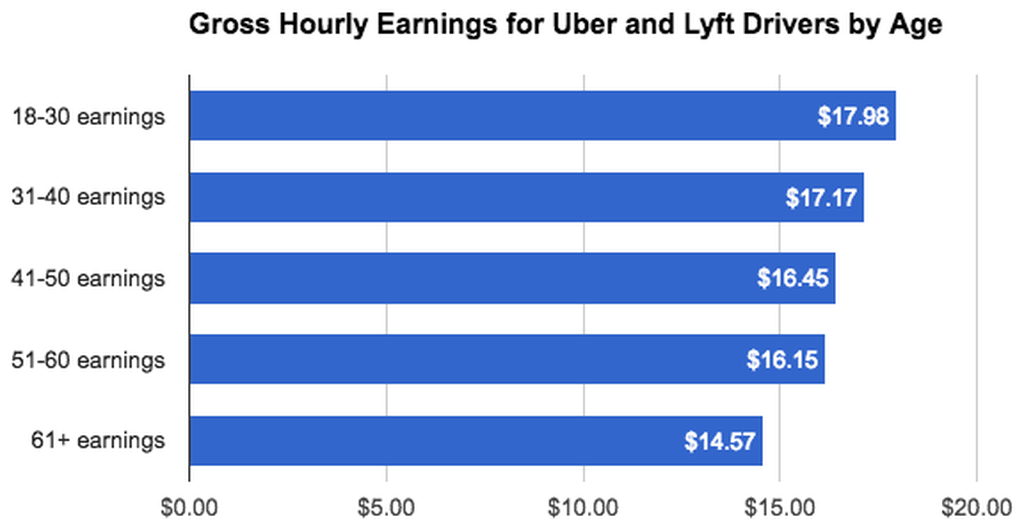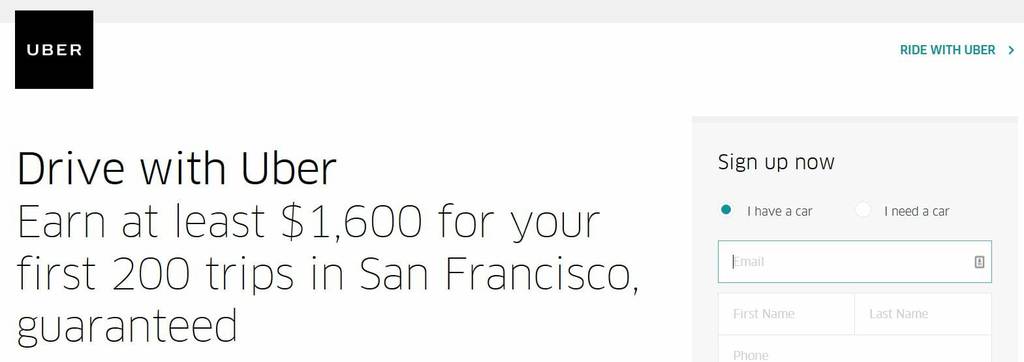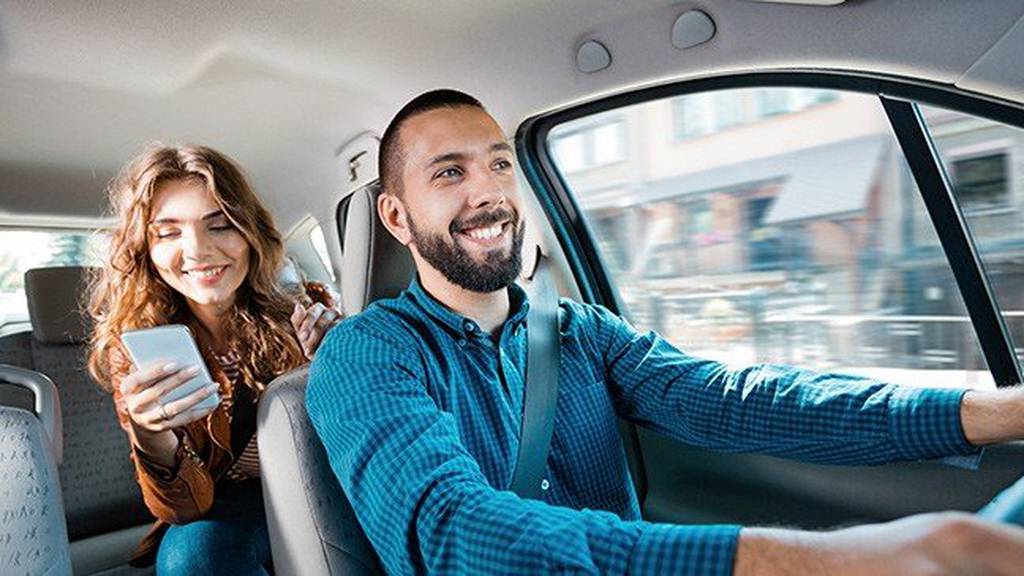The gig economy has created unique ways to earn a living. One way is to drive for Uber or Lyft. But which of these companies is better for drivers, and how does the pay compare?
While Uber and Lyft have similarities, differences between the two companies abound. Let’s take a look at what to expect when working for either company, and which pays drivers more money.
Uber Versus Lyft
These two ride-sharing companies are similar in many ways. This can make it hard to decide which company a new driver should choose to work for (though, many choose to drive with both!).
Here are some key similarities:
- Both services are app-based, allowing users to request a ride, pay drivers, and schedule trips from their phones.
- Both services are available 24/7.
- Lyft and Uber both offer various vehicle options, depending on your party’s size, whether you want a black car experience, or are seeking the cheapest option (like the ability to pool with other riders going in the same direction).
- Both offer estimated pricing before scheduling.
- Both companies are now offering food delivery services in certain markets.
These make both Uber and Lyft enticing for riders, allowing them many options for their next trip. But what about from a driver’s perspective? What are the similarities?
- Both services allow drivers to log into the app whenever they are ready and available to drive, picking up riders of their choice.
- Both calculate prices using a base rate, miles traveled, time of day, and the type of vehicle requested.
- Uber and Lyft both allow riders to add a tip at the end of their ride.
- Both have periods of time where drivers will earn multiples of their usual fare, based on rider demand (called surge pricing or prime time).
- Both companies offer options to drivers for buying or renting vehicles, if you want to become a driver but don’t already have a car.
With this said, there are also a few big differences. For instance, Lyft is just now beginning its foray into international service, beginning with Toronto, Ontario. Uber, on the other hand, has been offering its app-based rides worldwide for quite some time, operating in 83 countries currently.
Also, tipping through Uber is fairly new (and was originally discouraged). While Lyft has given riders access to a driver gratuity option since its inception, Uber just introduced a tipping option in mid-2017. Since it’s a newer concept through the app, many drivers report that it hasn’t quite caught on. As a result, drivers don’t make as much in tips(on average) through Uber as they do driving for Lyft.
One more difference between the two companies is the ride environment. Lyft has developed a reputation for being a fun and friendly ride option, whereas Uber prides itself on offering a more professional, business-friendly. It even offers a high-end black car service to its riders (complete with a professional driver).
Lyft has grown up a bit over the years--a far jump from when cars used to arrive with fluffy, pink mustaches on the grill. However, if you are looking for a ride to your next business lunch or are traveling with a big client, UberBlack is probably the most suitable option.
Who Pays More?
If you’re asking whether you can make more driving for Lyft or Uber, you won’t get a clear answer. The amount you can earn is really contingent on a number of factors, including how often you drive, the type of vehicle you have, when you drive (and whether you earn surge pricing/prime time rates), and your operating expenses.
If you’re looking at a baseline, just wanting to know which company takes more in driver commissions, the answer is that Uber takes more. The company takes 25% of the rider’s charged fare, which includes both the distance traveled and the time spent on the trip. Lyft, on the other hand, only takes 20% of the fare.
| Commission taken from each rider’s fare | ||
|---|---|---|
| Uber | 25% | |
| Lyft | 20% |
However, this isn’t the whole story.
Booking Fees
When a rider pays for a trip through either Uber or Lyft, they may not realize that they are paying both a fare for their travel and a booking fee. This booking fee goes directly to the company to cover operating costs as well as safety and regulatory expenses. The driver never sees a penny of this charged amount.
The cost of the Uber booking fee varies by city. It tends to range between $1.85 and $2.45. This fee increased last year, which means that riders are paying more for their trip, but the driver isn’t seeing more money. This, of course, also means that the effective percentage of the total trip that Uber takes (versus what the driver earns) has risen.
For Lyft, this is called a Pickup fee. It also varies from city to city, with the fee ranging from about $1 to $2. As with Uber, the driver sees no percentage from this fee, but the rider pays more than their base fare. And, as with Uber, this also means that the effective percentage that Lyft takes is higher than the 20% that the company advertises.
So, if a rider takes a quick ride with Uber in San Antonio, amounting to $12 total, $2.45 of that will go directly to Uber for the booking fee. Of the remaining $9.55 fare, Uber will also take another $2.39 in commission, for a company cut of $4.84. This is a total percentage of 40.33--far higher than the 25% that they advertise to drivers.
What if a rider takes a longer ride in a different city (maybe Alexandria, VA, where the booking fee is $1.85)? Let’s say that their total ride cost is $32, of which $30.15 is fare. This means that Uber will take $9.39 in the end ($1.85 booking fee plus $7.54 commission), which makes up a 29.3% total cut.
While this is lower than the first scenario, it’s still notably higher than the 25% that many drivers expect to lose. Booking fees are a point of contention for drivers on both platforms. As they raise the price for riders but do not raise earnings.
What Real Drivers Are Actually Making
If you ask Uber or Lyft directly, you’ll get an enticing answer to this question. Over the years, claims have been made that drivers regularly earn anywhere from $20 to $30 (or more!) an hour driving for the ride-sharing service. However, actual drivers would beg to differ.
One driver who started his own Uber- and Lyft-based website, TheRideShareGuy, conducted a recent survey of drivers. Questions involved driver satisfaction, the reason behind becoming a driver for either platform, and how much folks are really making at the end of the day. The answers were surprising.
He found that of the 1,150 drivers surveyed, only a quarter of them made $20 an hour or more--and that’s before factoring in expenses like gas, maintenance, or tires! The majority of respondents (32.1%) made between $10-$14.99 an hour, with 17% of drivers making between $0-$9.99 an hour.

In this survey, the average earned by Uber drivers was $15.68 per hour. The actual take-home is lower, of course, once the cost of gas and other expenses is factored in.
For Lyft drivers, this average was a bit higher at $17.50. Again, Lyft drivers are responsible for their own expenses, so the amount pocketed will be less.
One other interesting tidbit was that this survey found a strong correlation between the age of the driver and the amount they earned per hour. In fact, drivers age 61+ reported making an average of $3 per hour less than their 18-30-year-old counterparts!

Other studies have surveyed drivers across the country throughout the years, attempting to lock in that overall average earnings number. It’s difficult to do, since so many regional and personal factors are involved, but the general consensus is that you aren’t likely to make the $25-30 an hour that is often touted.
At least, not on a consistent basis.
Factoring In Expenses
Of course, these numbers mentioned are an overall average, taking into account drivers from across the country. A different BuzzFeed News study, however, took a look at specific cities to see how drivers there fared after expenses and taxes were factored in.
For example, Houston drivers make an average of $10.75 an hour, far below the national average reported. And if you’re in Detroit, my apologies: your average is $8.77 an hour. This accounts for taxes taken out as an independent contractor, as well as average driving expenses.
Of course, these expenses can also vary widely depending on the age, condition, and fuel efficiency of the vehicle you own. If you drive a brand new Prius, you’ll net much more than someone driving around in a years-old SUV.
Either way, it’s easy to see how, based on expenses and how much you gross, you could actually wind up making less than minimum wage in the end.
Rewards and Bonuses
Drivers for both platforms are able to receive tips through the app or in cash, of which the company takes no cut. However, as mentioned earlier, Lyft drivers report receiving higher tips on average than their Uber counterparts. Which may or may not be due to the fact that tipping was unavailable (and even discouraged) through the app for years.
Both companies offer various incentives, rewards, and even bonuses for their drivers. These range from fuel rewards to frequent driver bonuses and even weekly promotions.
Here are some of the most popular:
- Lyft: $250 for fuel: Earn $1 in fuel rewards for every five rides you give, up to 50 rides in the first 30 days. *offer is expired*
- Lyft: Accelerate premium driver rewards: Earn your rank as a driver based on the number of rides given. Different levels offer different perks like cell phone discounts, fuel rewards, and roadside assistance.
- Uber: Boost: Boosted areas offer promotional multiples of fares in that area during certain times; these can be combined with Surge pricing (when available) for an even higher earning per ride.
- Uber: Quest: Complete a specific number of rides in a certain period of time to earn a promotional bonus (i.e.: give 10 rides this weekend to earn an extra $50).
- Uber: New Driver Guarantee/Bonus: If you sign up to be a new driver using available promotional links, you will receive guaranteed income minimums for a specific period of time. One such promotion is that if your earnings for your first 200 trips* (not including fees, tips, or commissions) do not reach $1,600, Uber will credit you the difference. *Trips must be given in the first 90 days.

Which Is Better?
So, if you’re looking to drive for one of the ride-sharing companies, which one will pay you more? Is Uber better than Lyft, or vice versa?
If you’re simply looking at which company’s drivers make more, Lyft’s hourly average of $17.50 is higher than Uber’s average of $15.68. Lyft also boasts better driver satisfaction. When asked whether they were happy driving for the company, 75.8% of Lyfts drivers said yes. That’s astounding, especially when compared to the results from the same question posed to Uber drivers--where the response was that only 49.4% of drivers were satisfied.
However, even though Lyft drivers seem to make more and are happier driving for the company, there is one interesting find. Of the drivers surveyed by RSG, 46.6% said that they actually still preferred driving for Uber (versus 41.7% who preferred Lyft).

So, why the discrepancy? If Lyft drivers are happier, higher rated, and make more money, why wouldn’t drivers prefer driving for them over Uber?
We can’t be sure of the answer, but it may have something to do with the volume of riders on the platform, the company atmosphere, or even the availability of service across the country (and internationally). Perhaps it’s a combination of all factors.
If you’re considering driving for Uber or Lyft, you need to do some research. Talk to drivers in your area to see how satisfied they are with their experience. Do the math on how much your vehicle costs to fuel and maintain. Then figure out how much you need to gross in order to make what you consider to be good money.
Related: Benefits To RideSharing and 8 Resources To Get You Started
You should also look at bonuses available, to take advantage of any new driver promotions that may net you some extra cash. Lastly, it may even be wise to try driving for both companies in the beginning. That way, you can see who earns you the most cash before committing to only one platform.
Want to learn more about driving as a side hustle?









